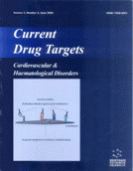Abstract
This review focuses on the behavior of metastatic tumor cells and their specific adhesion molecules. Much of this review is based on the results from our researches over many years. Electron microscopic investigations of metastatic processes have demonstrated that desmosomes, tight junctions, or cell fusion-like structures are formed between tumor cells and other cells such as endothelial, mesothelial, hepatic, and nerve cells. These findings suggest that metastatic tumor cells acquire specific cell adhesion or recognition systems. To investigate these adhesion mechanisms, we established floating sublines from rat ascites hepatoma AH7974 in vitro and compared their adhesion molecules with those of their adherent counterparts. The anchorage independence of these tumor cells can be explained by reduced production of extracellular matrix proteins, decreased expression of cell surface integrin(s), or lack of heparan sulfate proteoglycans on the cell surfaces. Although the metastatic potential of these sublines for lung could not be explained by these properties, it may be explained by expression of 56 and 62 kDa laminin-like substances containing Griffonia Bandeirea simplicifolia isolectin B4-binding carbohydrate(s). We examined the relationship between carbohydrate expression and metastasis of human breast, pulmonary, colorectal, gastric, and other cancers by using a panel of lectins and monoclonal antibodies (MAbs). These studies revealed that several lectins and MAbs such as Vicia villosa agglutinin (VVA), Helix pomatia agglutinin, anti-sialyl Lewis x-i MAb, and others were useful not only for predicting metastasis and the prognosis of patients but also for understanding the routes of metastatic spread. VVA-binding carbohydrates, i.e. Nacetyl- D-galactosamine residues, especially those carried by atypical MUC1 protein, in aggressive cancer cells may serve as an important drug target.
Keywords: cancer metastasis, metastatic mechanism, electron microscopy, adhesion molecule, carbohydrate
 27
27













